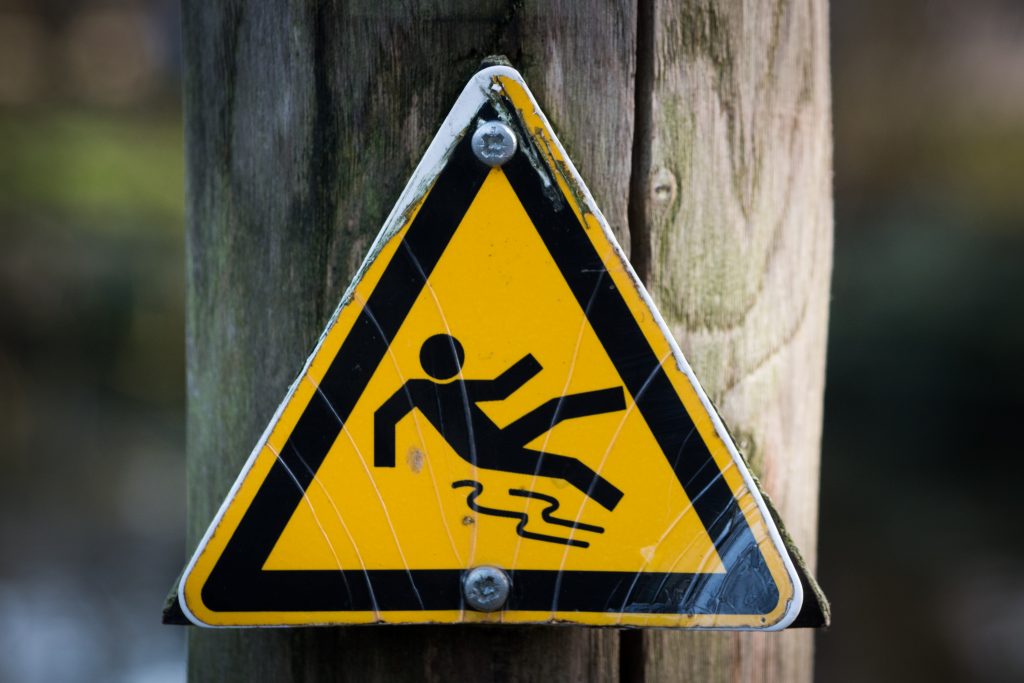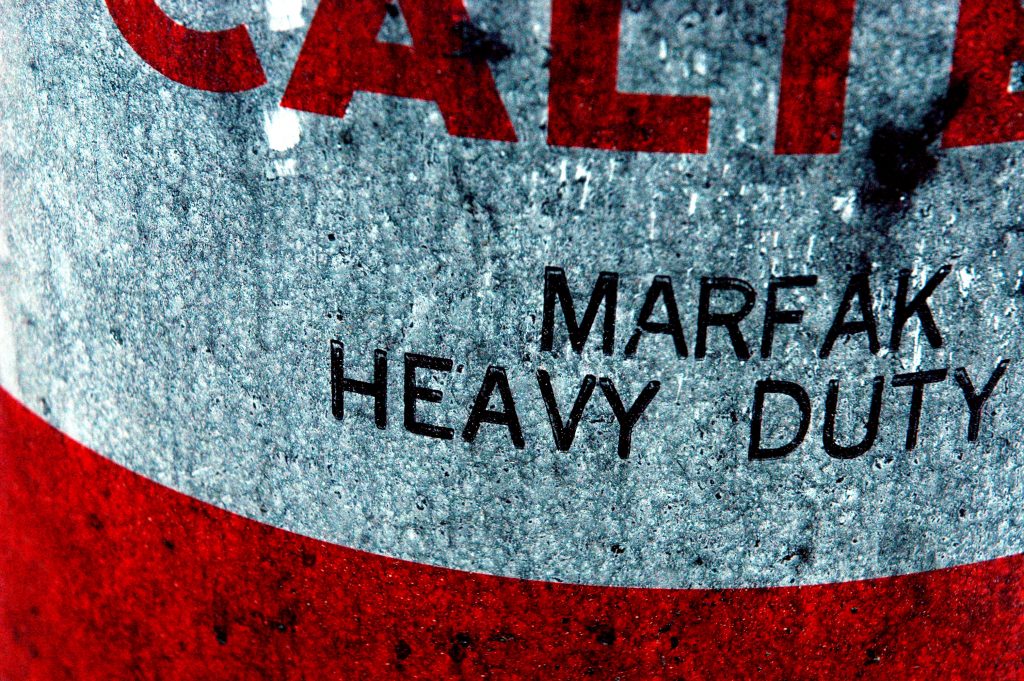 Property owners have a duty to keep their property safe against unreasonable risks of harm to those who are invited onto the premises. However, if a potential risk is “reasonable” is a matter of debate. If the hazard in question is obscured, the owner may be liable. But if the hazard is glaringly obvious, it may be the fault of the injured party. The discourse as to what constitutes “open and obvious” is at the heart of this case.
Property owners have a duty to keep their property safe against unreasonable risks of harm to those who are invited onto the premises. However, if a potential risk is “reasonable” is a matter of debate. If the hazard in question is obscured, the owner may be liable. But if the hazard is glaringly obvious, it may be the fault of the injured party. The discourse as to what constitutes “open and obvious” is at the heart of this case.
Virgil McCoy was a Cleco employee doing some routine maintenance on an electrical meter in Rosepine Apartments I when fate struck. In an effort to access the meter, McCoy had to walk a narrow path behind a row of overgrown bushes and stand precariously close to an uncovered water meter just to begin the repairs. As he worked, his left foot slid backward and he fell into the hole where the water meter sat. McCoy, and his employer Cleco, filed a lawsuit against Rosepine Seniors Apartments Partnership, their insurers, the property managers, and even the Town of Rosepine, for liability for McCoy’s injuries (collectively called “Defendants”).
The Defendants countered by claiming the hazard the meter presented was “open and obvious,” and McCoy should have been aware of the danger. They moved to have the case dismissed by filing a motion for summary judgment. Summary judgment is when the court decides for one party without a full trial. When the court examines all the information submitted for trial up to that point, e.g. the complaint, the defendant’s answer, items procured in discovery, affidavits, depositions, etc., and finds there is no genuine dispute of fact between the parties, summary judgment is entered. La. C.C.P. art. 966. The one who bears the burden of proving there is no dispute is not so clear-cut. One thing to note is that the party filing the summary judgment motion does not need to show all the elements of the other party’s case are insufficiently proven, but only that one or two elements cannot be met with the evidence presented. The burden then shifts to the other party to show those elements can be met. According to Defendants, McCoy’s complaint failed to meet one particular element of La. C.C. art. 2317.1: whether the hazard presented an unreasonable risk of harm. The Defendants succeeded in their motion, and the trial court dismissed the case via summary judgment.
 Most people believe that if you suffer a slip and fall accident in a store, you will most likely be entitled to some level of compensation. Unfortunately, that is not always the case.
Most people believe that if you suffer a slip and fall accident in a store, you will most likely be entitled to some level of compensation. Unfortunately, that is not always the case.  Louisiana Personal Injury Lawyer Blog
Louisiana Personal Injury Lawyer Blog


 Ice storms can create hazards for the general public as well as employees. A Mansfield nurse found out that parking lot falls do not qualify for workers’ compensation benefits. A Shreveport Hospital was able to avoid paying workers’ compensation benefits with the help of an excellent attorney after the employee’s fall.
Ice storms can create hazards for the general public as well as employees. A Mansfield nurse found out that parking lot falls do not qualify for workers’ compensation benefits. A Shreveport Hospital was able to avoid paying workers’ compensation benefits with the help of an excellent attorney after the employee’s fall. If injured on someone else’s property, it is important to know what has to be proven in order for a legal case to go forward. If the injury occurs from a defective structure, then the owner of the premise must have constructive knowledge of the defectiveness. The factors a court evaluates when the defective structure is on public property differ from those of a private owner. So, what happens if you are injured on someone else’s property?
If injured on someone else’s property, it is important to know what has to be proven in order for a legal case to go forward. If the injury occurs from a defective structure, then the owner of the premise must have constructive knowledge of the defectiveness. The factors a court evaluates when the defective structure is on public property differ from those of a private owner. So, what happens if you are injured on someone else’s property? Walmart is buzzing with pedestrian traffic on a daily basis. Where crowds of people are gathered, accidents are sure to follow. Sometimes Walmart’s products are knocked off of shelves, children spill juice in the aisles, and liquid products can slip from a person’s grasp and splatter across the floor leaving a hazardous environment for anyone to slip and fall. Despite Walmart’s best efforts to keep the stores clean, accidents still happen. As a result, legal services may be needed. If that is the case, information about the parties involved is exchanged between the opposing counsels for a period of time known as discovery. Information may be gathered through depositions or a series of questions under sworn testimony out of court. Once sufficient time has been provided for discovery, a party may determine that there is no factual basis for the case to move forward. Because of this lack of material fact, the party may then make a motion for summary judgment. This motion, if granted, can result in a dismissal of the entire lawsuit. Our justice system, however, provides an appeal process for situations where these judgments were granted in error! So, what do you do when you have been blindsided by summary judgement?
Walmart is buzzing with pedestrian traffic on a daily basis. Where crowds of people are gathered, accidents are sure to follow. Sometimes Walmart’s products are knocked off of shelves, children spill juice in the aisles, and liquid products can slip from a person’s grasp and splatter across the floor leaving a hazardous environment for anyone to slip and fall. Despite Walmart’s best efforts to keep the stores clean, accidents still happen. As a result, legal services may be needed. If that is the case, information about the parties involved is exchanged between the opposing counsels for a period of time known as discovery. Information may be gathered through depositions or a series of questions under sworn testimony out of court. Once sufficient time has been provided for discovery, a party may determine that there is no factual basis for the case to move forward. Because of this lack of material fact, the party may then make a motion for summary judgment. This motion, if granted, can result in a dismissal of the entire lawsuit. Our justice system, however, provides an appeal process for situations where these judgments were granted in error! So, what do you do when you have been blindsided by summary judgement? Property owners have a duty to keep their property safe against unreasonable risks of harm to those who are invited onto the premises. However, if a potential risk is “reasonable” is a matter of debate. If the hazard in question is obscured, the owner may be liable. But if the hazard is glaringly obvious, it may be the fault of the injured party. The discourse as to what constitutes “open and obvious” is at the heart of this case.
Property owners have a duty to keep their property safe against unreasonable risks of harm to those who are invited onto the premises. However, if a potential risk is “reasonable” is a matter of debate. If the hazard in question is obscured, the owner may be liable. But if the hazard is glaringly obvious, it may be the fault of the injured party. The discourse as to what constitutes “open and obvious” is at the heart of this case.  Grease is often used to make foods easy to remove from pans and baking sheets. It creates a slippery, smooth surface that allows most foods to slide right out of the pan. Unfortunately, when grease meets a wood floor, humans walking over can slide around as well. Sharon Tomlinson found this out the hard way as a waitress led her to a table in a Daisy Dukes restaurant in May of 2011. It is believed that airborne grease particles settled on the floor, causing Mrs. Tomlinson to fall and injure her knee when she stepped off of a commercial rug and onto the allegedly greasy floor.
Grease is often used to make foods easy to remove from pans and baking sheets. It creates a slippery, smooth surface that allows most foods to slide right out of the pan. Unfortunately, when grease meets a wood floor, humans walking over can slide around as well. Sharon Tomlinson found this out the hard way as a waitress led her to a table in a Daisy Dukes restaurant in May of 2011. It is believed that airborne grease particles settled on the floor, causing Mrs. Tomlinson to fall and injure her knee when she stepped off of a commercial rug and onto the allegedly greasy floor.  Under Louisiana law, an owner of a building is not necessarily responsible for all injuries resulting from any risk posed by the building. Owners are only responsible for those injuries caused by defective conditions, and courts have recognized that defendants have no general duty to protect against hazards that are “open and obvious.” The logic behind this approach is that when a risk is open and obvious to everyone, the probability of injury is low. As a result, the owner of the premises is not required to go to the trouble and expense of fixing the condition that could be easily avoided by prudent persons.
Under Louisiana law, an owner of a building is not necessarily responsible for all injuries resulting from any risk posed by the building. Owners are only responsible for those injuries caused by defective conditions, and courts have recognized that defendants have no general duty to protect against hazards that are “open and obvious.” The logic behind this approach is that when a risk is open and obvious to everyone, the probability of injury is low. As a result, the owner of the premises is not required to go to the trouble and expense of fixing the condition that could be easily avoided by prudent persons. Generally, when an accident occurs on a property that is the result of the property owner’s negligence, it is presumed that the property owner is liable for the person’s injury. However, when liability does not exist, a motion for summary judgment is a procedural device that the defendant in a lawsuit can use to dismiss the plaintiff’s claim. Under Louisiana law, a motion for summary judgment will be granted if the pleadings and discovery show there is no genuine issue of material fact and that the party seeking summary judgment is entitled to judgment as a matter of law.
Generally, when an accident occurs on a property that is the result of the property owner’s negligence, it is presumed that the property owner is liable for the person’s injury. However, when liability does not exist, a motion for summary judgment is a procedural device that the defendant in a lawsuit can use to dismiss the plaintiff’s claim. Under Louisiana law, a motion for summary judgment will be granted if the pleadings and discovery show there is no genuine issue of material fact and that the party seeking summary judgment is entitled to judgment as a matter of law. Imagine shopping for flooring on a Saturday. The store is crowded and the samples of luxury vinyl tile are starting to all look the same. The flooring store has graciously placed a bench in the showroom. Much to everyone’s embarrassment, however, the bench collapses under the weight of a patron. Who is responsible for the injuries both to pride and physical body in this situation? For one Gretna, Louisiana woman, a lack of evidence on the cause of the malfunction caused her lawsuit to collapse as well.
Imagine shopping for flooring on a Saturday. The store is crowded and the samples of luxury vinyl tile are starting to all look the same. The flooring store has graciously placed a bench in the showroom. Much to everyone’s embarrassment, however, the bench collapses under the weight of a patron. Who is responsible for the injuries both to pride and physical body in this situation? For one Gretna, Louisiana woman, a lack of evidence on the cause of the malfunction caused her lawsuit to collapse as well.  Slip and fall cases seem to go with grocery stores like peanut butter goes with jelly. With all that slick inventory, it is surprising there are not more accidents. Who is responsible for injuries from these accidents? As with many legal issues, it is complicated. For one man out of Slidell, a lack of evidence caused his case to fall flat and release the grocery store from all liability.
Slip and fall cases seem to go with grocery stores like peanut butter goes with jelly. With all that slick inventory, it is surprising there are not more accidents. Who is responsible for injuries from these accidents? As with many legal issues, it is complicated. For one man out of Slidell, a lack of evidence caused his case to fall flat and release the grocery store from all liability.